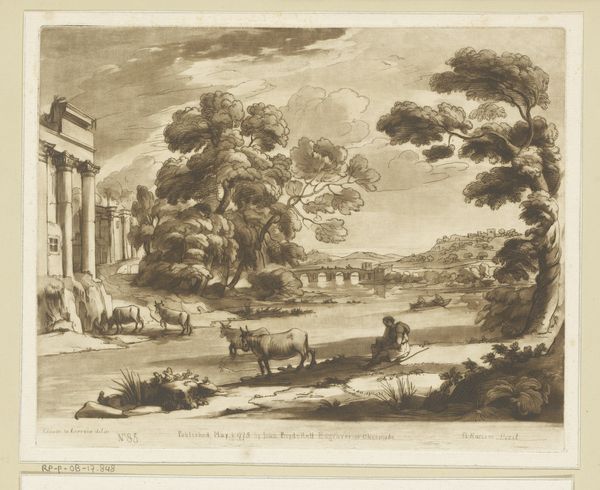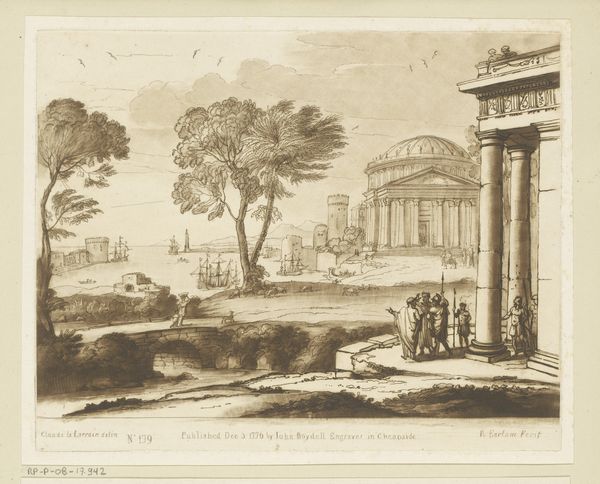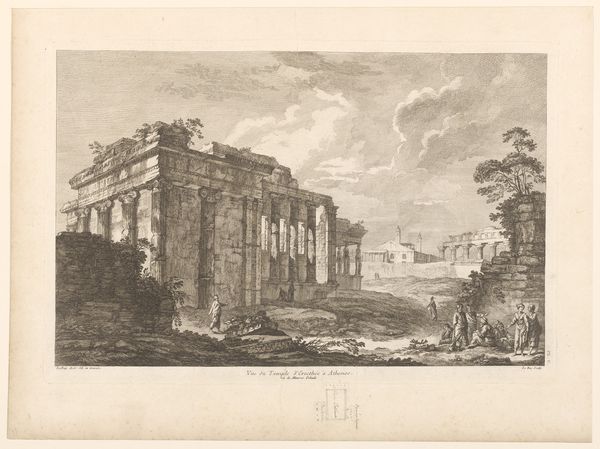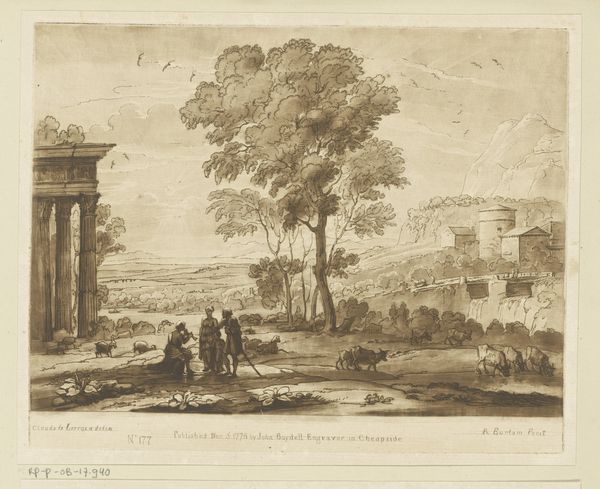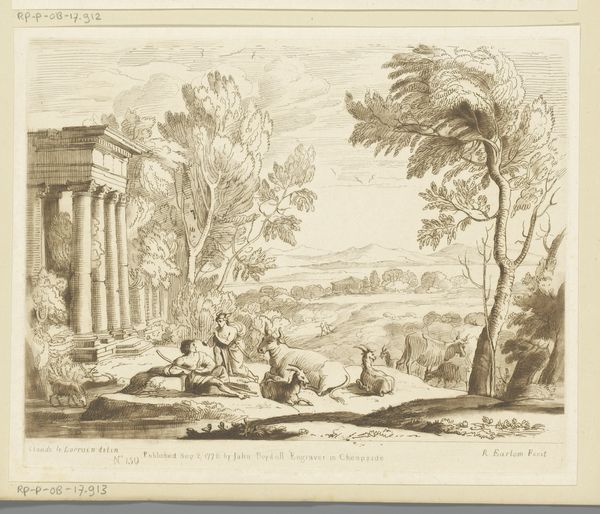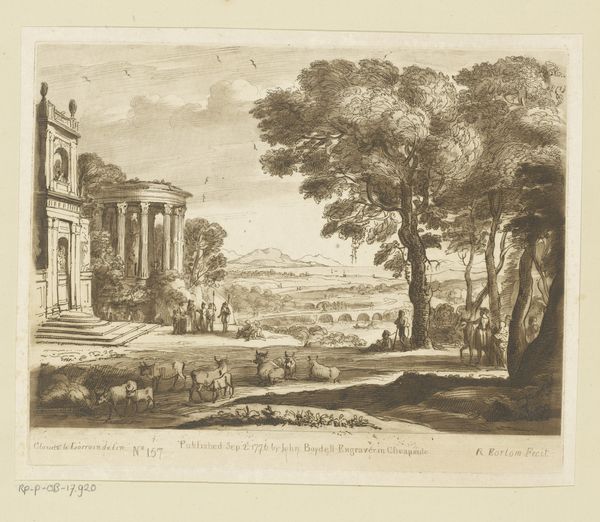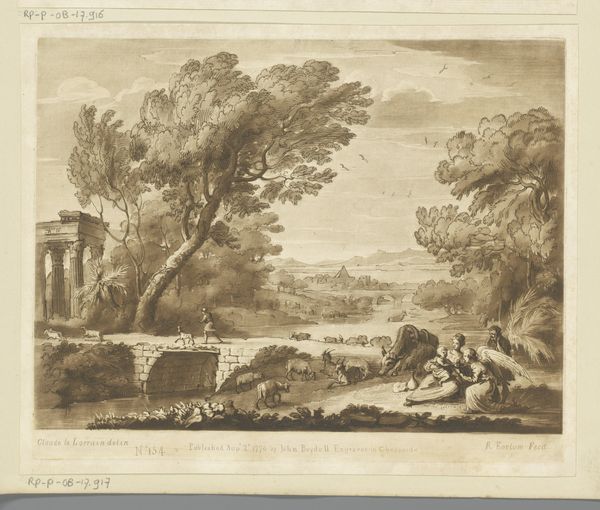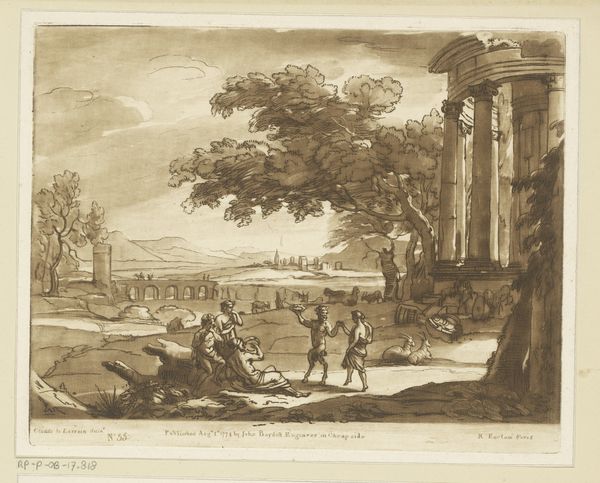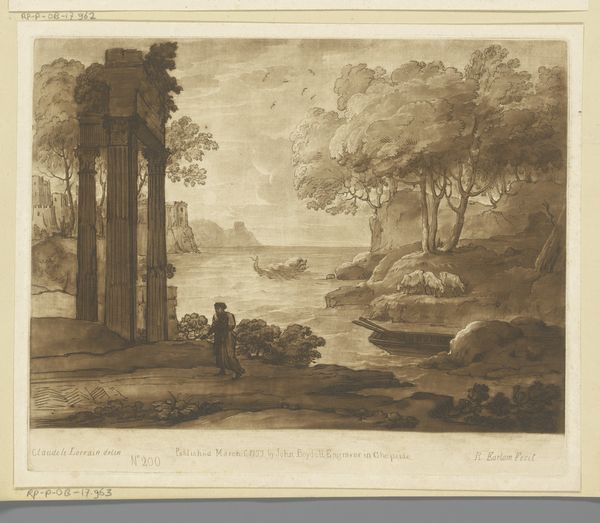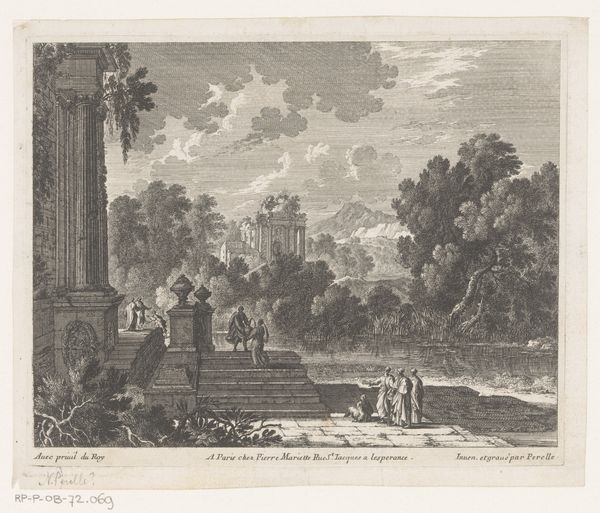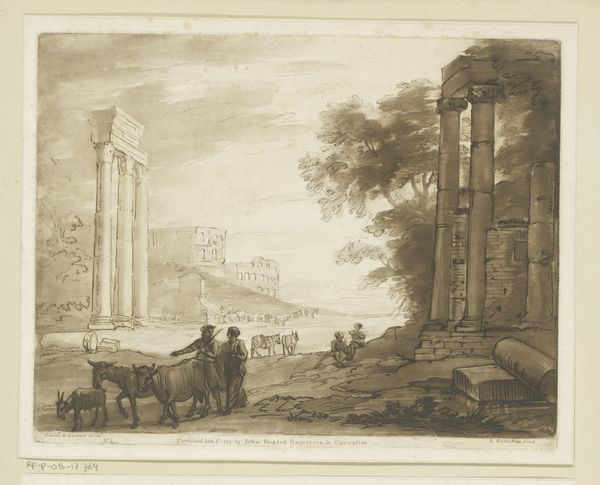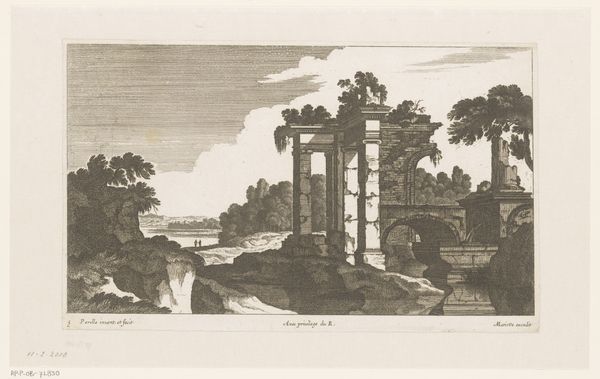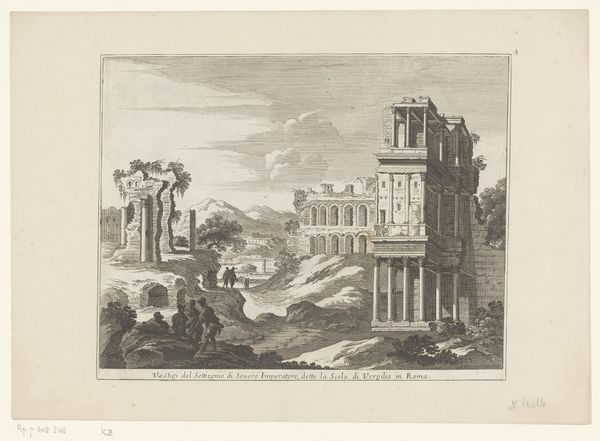
print, etching, engraving
#
neoclacissism
# print
#
etching
#
landscape
#
classical-realism
#
history-painting
#
engraving
Dimensions: height 206 mm, width 258 mm
Copyright: Rijks Museum: Open Domain
Editor: This etching, "Coastal Landscape with Apollo and the Cumaean Sibyl," possibly from 1776 by Richard Earlom, presents a classical scene with figures amidst ruins and idyllic nature. It feels… almost staged, like a theatre backdrop. What do you see in this piece? Curator: It's fascinating how Earlom captures this neoclassical desire to reconstruct an ideal past. We see it through a lens of power and gender. Apollo, the epitome of masculine authority, confronts the Sibyl, a priestess, a figure of female prophecy relegated to a liminal space. The ruins are not simply remnants of a glorious past; they are symbols of a world that has actively erased female voices. Editor: Erased female voices? I hadn't considered that. I was mostly focused on the sort of romantic landscape, all crumbling columns and whatnot. Curator: Exactly. Consider the setting – a coastal landscape, a space of transit and exchange, but also of vulnerability. The Sibyl, trapped between the divine and the mortal, the past and the future, represents a marginalized figure whose wisdom is both sought and feared. What does it mean to place this interaction, steeped in patriarchal structures, in a picturesque scene meant for contemplation? Editor: So, you're suggesting that the "beauty" of the landscape is complicit in obscuring the power dynamics at play? Curator: Precisely! The neoclassical aesthetic can be read as a visual language that normalizes specific social hierarchies, effectively silencing alternative narratives and experiences. The beauty serves to legitimize a power structure, that is intrinsically exclusionary. Editor: That makes me see it completely differently now. I will definitely have to do some further thinking around neoclassical aesthetics. Curator: Exactly, that's why interrogating history allows us to reconsider present assumptions, to dismantle systems of thought.
Comments
No comments
Be the first to comment and join the conversation on the ultimate creative platform.
